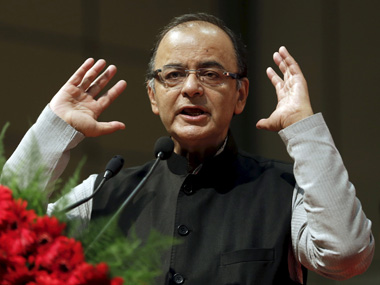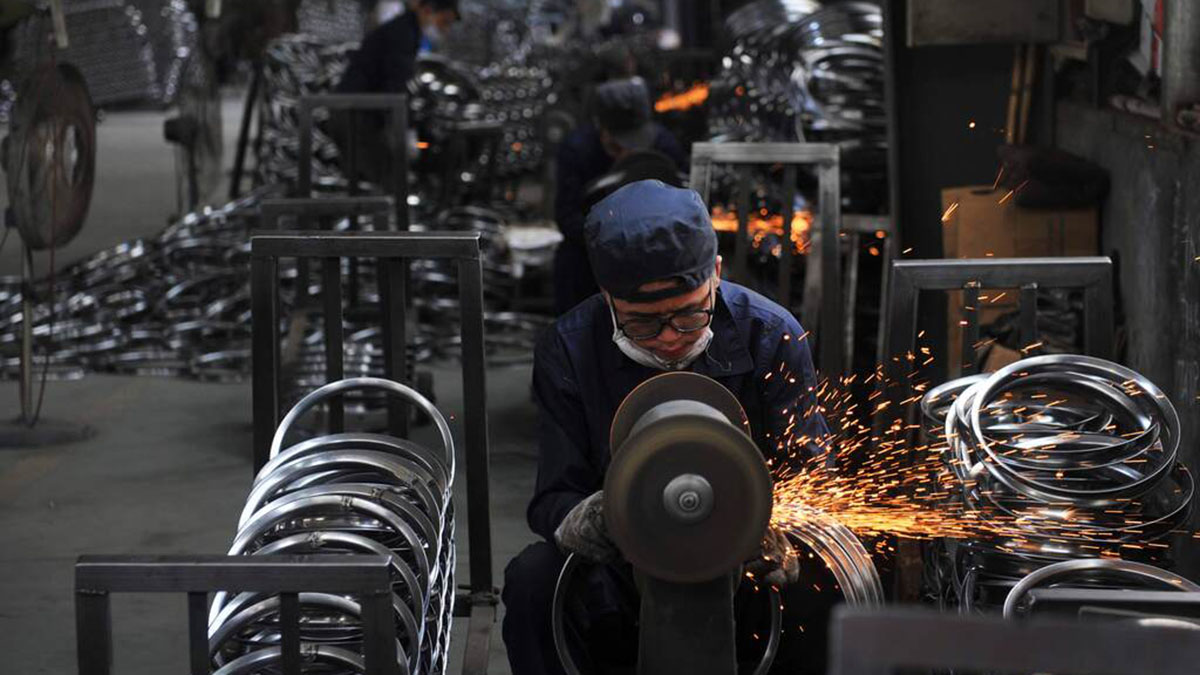The one thing you should not celebrate about the latest GDP numbers is the nonsense that “India is the fastest growing major economy”, and especially (clap, clap) that it is “growing faster than China”.
At 7.3 percent GDP growth in the October-December quarter, we are growing about 0.5 percent faster than China’s 6.8 percent in the comparable period. But in terms of magnitude, it is nothing to write home about. Reason: China’s economy is more than five times India’s, and comparing 6.8 percent growth on a base that is five times larger with 7.3 percent makes no sense. Our absolute growth (in terms of dollars, not percentage) on an economy of China’s size would show up as real growth of around 1.4-1.5 percent.
So, the sooner we stop comparing ourselves to China, the better. We are not in China’s league, and if we want to get there, we should focus on what we need to do, and not on the relative percentage growth of the Indian and Chinese economies. We have to grow five times faster to impact the world the way China does now – and that is an impossibility.
That said, we should not be unhappy about being told that our GDP in 2015-16 will grow 7.6 percent. But there is a fly in the ointment even here: even this is largely due to two factors: the upward revision in growth numbers in the first two quarters, and the possibility that even the third (now put at 7.3 percent) may get that statistical booster shot. If that does not happen, Q3 numbers will actually mean a deceleration is taking place from 7.6 percent and 7.7 percent in the first two quarters to 7.3 percent now. Nothing to shout from the rooftops about.
Moreover, it is worth reminding ourselves that our 7.6 percent is based on the new GDP methodology introduced last year, which neither the Reserve Bank of India nor even the Chief Economic Advisor is confident about. Calculated on the old GDP methodology, our growth is possibly around 6.5 percent, which is one more reason for our breathless coverage of India-China comparisons to look foolish.
Under the new gross value added (GVA) method of calculating GDP, a much larger database of nearly five lakh companies supplied by the ministry of corporate affairs (MCA) is used to derive industrial growth data, which shows a tigerish 9.5 percent rise in manufacturing. In contrast, the Index of Industrial Production (IIP) shows only 3.9 percent growth in the April-November period of 2015-16, up from 2.5 percent in the year before.
Nothing spectacular is likely to have occurred in December to change this scenario. Most probably, the new company performance data has a lot of bumf based on thousands of companies which may exist only on paper – or which report data sporadically. Or both. Without a clean-up of the database supplied by the ministry of corporate affairs, one can’t be sure what is really going on.
If manufacturing were actually growing at 9.5 percent, we would not be seeing all this handwringing among bankers stuck with bad loans and businessmen sporting long faces asking meekly for more reforms.
The big lesson one must draw from this is simple: when the method of measuring growth (or inflation or industrial output) is changed, the old index must not be abandoned altogether. It must be published alongside for at least two years so that users of the data know how to relate the old data with the new one. The abrupt elimination of the old GDP series is like suddenly changing the unit of measurement from inches to centimetres without knowing how centimetres relate to inches.
The number Finance Minister Arun Jaitley should be really happy about – the narrowing of the gap between real GDP and nominal GDP, that is, the current GDP deflated by estimated inflation – is this: nominal GDP in 2015-16 is expected to grow by just 8.6 percent, just one percent above the real GDP. (GDP itself is arrived at by adding taxes and subtracting subsidies from the GVA figure).
When the gap between nominal and real GDP is so narrow, it should be seen as a huge triumph against inflation. But here again the victory may be pyrrhic. The low nominal GDP may be due to the fact that the wholesale prices index is still negative (-0.7 percent in December), while the consumer prices index is significantly positive (5.6 percent). Since the GDP deflator is a combination of WPI and CPI, it is possible that nominal GDP is actually higher than 8.6 percent, but that is poor consolation for Jaitley.
Jaitley has to work with the figure now dished out by the Central Statistics Office, and the low nominal GDP growth will give him another headache in meeting his fiscal deficit target.
The fiscal deficit for any year is a fixed number (Rs 5,55,649 crore for 2015-16), while the nominal GDP on which it is calculated is moving target. When the budget was presented, the nominal GDP was pencilled in at Rs 141,08,945 crore for the year. It was by dividing the first number by the anticipated GDP that we got the fiscal deficit target of 3.9 percent.
But the latest GDP estimates put the nominal GDP as Rs 135,67,192 crore. On this lower base, if Jaitley has to meet his 3.9 percent target, he has to trim his expenses by around Rs 26,000 crore – or raise taxes by a similar amount. This is the only way he can hit bullseye.
So one should bet on further fuel taxes before we hit March. And we can also expect some shortfall in spending. Both higher taxes and lower spending can contribute to decelerating growth.
The only (marginally) heartening feature of the latest GDP number is that agriculture is still contributing positively to growth – about 1.1 percent (against negative growth last year).
But if we discount manufacturing growth of 9.5 percent due to discrepancies with the IIP, the rest of the picture is worrisome: mining is growing slower than last year (6.9 percent this year versus 10.8 percent last year), and so are power and gas (5.9 percent vs 8 percent), construction (3.7 percent vs 4.4 percent), trade, hotels, etc (9.5 percent vs 9.8 percent), financial services (10.3 percent vs 10.6 percent), and public administration and defence (6.9 percent vs 10.7 percent). The picture is actually one of slow deceleration, though it is too early to conclude this.
In fact, but for the stellar growth in the manufacturing number, the entire picture outside agriculture would be one of slowdown in the rate of growth.
This is hardly something for Jaitley to celebrate.
The worry signals, to sum up, are these:
#1: Manufacturing revival is suspect.
#2: The slowdown in construction, often the best creator of jobs, is politically damaging. No jobs means no re-election in 2019.
#3: The drop in government expenditure is also surprising.
The conclusion we can draw from all this is this: if there ever is a case for more reforms and a short-term increase in government spending, 2016-17 is probably the best time for it, provided the money is spent in areas which the maximum income and growth multipliers. Next year is also the best year for a big-bang increase in pay expenses as recommended by the Seventh Pay Commission.
Jaitley has to go for it. He has nothing to lose from it. He has to take the attendant risks involved.


)




)
)
)
)
)
)
)
)